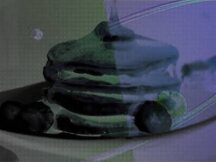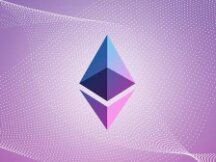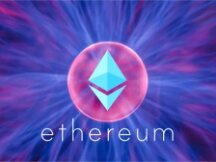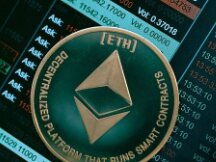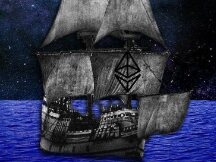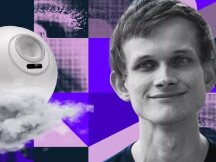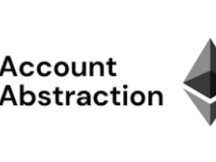2021 L2 track review: quick and impressive results
Since the inception of Genesis Block on July 30, 2015, over 1.4 billion transactions have taken place on the Ethereum network, and the daily user base is also stable at over 800,000. Has also contributed to the industry DeFi / NFT / DAO / cryptography and other major strengths, giving birth to the Web3 concept, which points to the ultimate source of decentralization.
However, ETHereum's TPS 15 failed to meet market needs, causing fuel prices to skyrocket, resulting in a one-time transfer fee of $ 100. High performance for public channels, ETH2.0 and Ethereum L2 (layer 2) means. to solve the problem, but compared to the long-term upgrade of ETH2.0, Ethereum L2 is a faster solution.
Among the many Ethereum L2 solutions, zkSync / StarkNet / Optimism / Arbitrum stands out. Lightweight Metis, the exclusive L2 game project Immutable X and the possible large-scale L2 solution Hermez Polygon are worth listening to. However, there are many issues in the development of L2, such as interoperability and composability issues / ineffectiveness issues of optimistic project special assets.
How many veteran DeFi projects are decided in the face of these changes? What does the future design of Ethereum L2 look like?
Ethereum L2 background development
Currently, Ethereum is bulky and expensive, but a strong user ecosystem is a strong support for Ethereum. However, if Ethereum's performance could not be mentioned, it would lead to faster growth of human ecosystems. The increase in SOL / BSC / AVAX / Matic in the first half of 2021 is a significant example. cooking.
So, how do you improve Ethereum's performance?
We know that traditional blockchain operators need three services: bandwidth, compute, and storage, which are instrumental in how blockchains like Bitcoin and Ethereum work. )) and latency (time required to perform a trade) are two measures, and how to improve these two measures is divided into four.
The first is to use an intermediate process, the second is to use bigger blocks and greater market recognition, the third is to use L2, and the fourth is to select shards such as ETH2.0. not found.
First, if you choose to use an intermediary solution, the blockchain process must select a trusted third party to take over the transaction, and users will benefit from a Paypal level trading experience. The volatility and benefits of decentralizing blockchain will disappear, and moderate scrutiny will result in loss of assets and data.
You can then select larger blocks and speed up the design process to improve performance, but as a result, the cost of operating the node will increase further. , the development of EOS now shows that communities are not yet buying a huge impact on the blockchain. Solana and Ripple, who received these ideas, are still on the hunt for capital, but there are significant differences between communities and future developments. with Ethereum. Moreover, in the 2017 BTC fork conflict, the final winner was BTC, which chose community speed because small blocks are better for building a blockchain strategy in the direction of decentralization.
Third, select L2 as the extension, that is, create a blockchain process outside the key chain to display the key chain count and storage, the end of the key chain identification occurs so that every industry can be trusted to ensure that L2 and the current L2 head like zkSync / StarkNet / Optimism / Arbitrum, get this idea. This process solution guarantees the reliability of the data on the decentralization site, and the processing complexity is lower than that of sharding (ETH2.0).
Finally, select the ETH2.0 partitioning extension strategy The ETH2.0 process is divided into three stages: Phase0, Phase1 and Phase2. Currently, Ethereum is at level 0, that is, online chain tag and POS authentication are enabled, and only ETH tokens are sent to the address specified in the contract for the mining contract, no change. It won't be long before ETH2.0 is live and fully operational. Now, Polkadot / Near the public head chain has adopted a sharding architecture.
In summary, Ethereum L2's scaling concept is a three-dimensional compromise option: low difficulty of development / guaranteed decentralization / guaranteed data security. If ETH2.0 is the end of the long run, L2 is the rest of the way.
Currently, major L2 solutions include State Channels, Sidechain, Plasma, Rollup, and Validium, but after good judgment, Rollup was ultimately selected by the Ethereum community as the ultimate scaling technology. Chain bridge solutions such as DAI Capital Bridge from Maker DAO, cBridge / Hop protocol from Connext / Celer and other network link solutions using State Channel / Sidechain / Plasma technology.
If so, what is the current development in L2?
Ethereum L2 Improvements:The cost of locksmith services has increased and prices have fallen sharply.
2021 is the final year and the frontier in Ethereum L2. According to data from L2BEAT, the total volume of Ethereum L2 has grown more than 100 times over the past six months, from $ 49 million in January 2021 to $ 5.78 billion today, a multiplication by nearly 18.. . Among them, the Arbitrum network is valued at $ 2.54 billion, accounting for 44% of the total closed volume of L2, and the second largest closed volume of YdX is $ 977 million, or 17%. Third is Loopring, which accounts for 10% of the $ 583 million in packaging volume.

In terms of project development, Ethereum L2 has developed prototypes from four L2 projects: zkSync / StarkNet / Optimism / Arbitrum and implemented through L2 applications such as Immutable X / Hermez / Metis / Polygon.
Depending on the technology used to build the project, it can be divided into ZK Rollup (abbreviated ZR) and Optimistic Rollup (OR). StarkNet is a ZR project developed by the Matter Labs team using the zk-SNARK solution from StarkWare, a non-profit research and development organization, using StarkEx. The ultimate representatives are Optimism and Arbitrum, Optimism is an OVM solution developed by OR and Arbitrum is developed by the Israeli group Offchain Labs.
Another important L2 project is the Immutable X / Hermez / Metis. Among them, Immutable X, a set of GameFi applications, is positioning itself as a unit in the blockchain world using the design experience based on Validium technology (powered by ZR). Hermez (acquired by Polygon for $ 250 million in August) also acquired the ZK technology, developed by the technical team of Ethereum Scaling Solutions iden3, based on its design prototype. Metis, a branch of Optimism, is known for its low cost, high speed, and Ethereum-level financial security.
Of all the great L2 concept projects, the most notable is Polygon. Although the industry has always written it "using Plasm scaling technology, which is more basic and less secure," Polygon is committed to improving quality. With three development partners: Polygon Commit Chain, Polygon SDK and Polygon Avail, Polygon acquired Hermez for $ 250 million in August of this year, ultimately renaming it Polygon Hermez, becoming the fourth solution. Polygon acquired advanced technology maker Mir again in December for $ 400 million, and later changed its name to "Polygon Zero" and integrated it into the existing Polygon ecosystem. Since then, Polygon has developed Plasm / sidechain / ZK Rollup extension technologies. It has become the L2 integration with the most comprehensive integrated project in the Ethereum L2 ecosystem, and MATIC's performance in the mid-range also indicates that the capital has a high profile for this solution.



Expansion technology and project details
Ethereum L2 benefits from reduced operating costs.
Based on the stats on the l2fees website, you can usually save over 90% by using L2 instead of ETH / tokens / swap. For example, when Polygon Hermez replaces ETH, the cost is $ 0.25, which is 3.1% of the cost of the Ethereum mainnet, and according to other examples, when replacing ERC 20 tokens using Loopring , the cost is only 0.29. 1.6% of the cost of direct use of the Ethereum mainnet



Value for various exchange options in Ethereum L2
While the development of Ethereum L2 is in full swing, there are many issues.
Ethereum L2 Problems and Solutions
Problems with Ethereum L2 include interoperability and integration issues, L2 interoperability issues, long downtime for Ethereum L2, and developer time cost moving from L1 to L2.
First, let's look at the interactions and combinations of L2 OR project assets, or the issue of exchange rates.
For reliable solutions based on evidence of fraud, shutting down L2 may take at least a week, and integrating between different L2 platforms may take longer, which is not good for users. In response to this problem, existing operations can now provide a bridge connection to an L2 network and users can immediately switch from one L2 network to another. In particular, DAI Capital Bridge from Maker DAO, Connext, cBridge from Celer, Hop Protocol, etc. also work to provide comprehensive solutions.
The second is the time value of the output from L1 to L2.
Most L2s, there is an additional development cost for the application developer to go from L1 to L2. You may need to learn a custom configuration environment for your network, such as Zinc from zkSync or Cairo from StarkWare. Of course, the supervisor must provide something. The tool still allows developers to easily convert L1 application to L2 versions.
Of course, this is also possible with Celer's field scaling solutions. The so-called extension means that the L1 application can be used on L2 networks without further integration. In this case, L2 is similar to the procedure for identifying the bonus to be distributed. The support groups for this site are mainly Layer2.Finance from Celer and DeFi Pooling solution from StarkWare.
Finally, let us examine the problem of the reconversion of the assets of the OR project from L2 to L1.
Arbitrum accept OR method, due to the competition period, you will have to wait until the end of the competition period to collect your coins. The speed and timing are not the same as the ZK. In this regard, the agreement State Channel (Connext) and HOP also offered a number of solutions, for example Maker provides DAI financial bridge and Celer's cBridge and DeGate are two solutions for this purpose.
In fact, due to the architecture of ZR and OR, new issues also arise when solving the problem. For example, ZR does not receive any proofs and has good compatibility with L1. However, creating generic smart contracts is very difficult. , the expectations are too high, which is very difficult for both parties. Still using OR as an example, he uses false evidence, which reduces the difficulty of leveling, but limits his interaction with L1.
In a six-month interview with Vitalik, when Lianwen mentioned if he had the biggest issues with Layer 2, Vitalik said that there were no major issues with these contests, but there were some problems. There will be 100 small issues, and if you cannot fix these 100 small issues, Rollup will perform poorly in performance and user experience. But if you can fix 50 or 80 out of 100 problems, the user experience is good. For example, there is the problem of assuming the problem of eliminating an optimistic cumulation. It will take a week to withdraw money from the project in good faith. They therefore want to put in place a liquidity mechanism so that users can withdraw more quickly.
Vitalik also believes that if L2's TPS is too high, he will face node sync issues. Going forward, as the L2 ecosystem succeeds, node timing issues will be determined.
Finally, Vitalik believes that with the rise of L2 platforms, in the future, there will be more and more similar platforms such as Optimism, Arbitrum, Loopring, and the integration of different platforms (Cross-Rollup exchange ). ) can become a problem. The current solution is to use DAI Fund Bridge from Maker DAO, Connext, cBridge from Celer, Hop protocol, and other policies to connect and match different L2s.
In fact, alongside the L2 upgrade, many DeFi functions have also chosen to upgrade to Layer 2.
DeFi in terms of L2
According to incomplete statistics, last year several DeFi projects such as DEX, wallet, oracle, electronic devices announced their intention to enter the L2. Synthetix's SNX Promise Service was also launched by Optimistic Ethereum. Graph added support for Phase 2 as early as 2021. The NFT Crypto Collection Project Aavegotchi Token GHST has started moving to a Phase 2 Matic network solution. Oracle Machine Chainlink has already developed an upgrade solution. Layer 2 ladder and the dYdX derivatives trading platform is directly integrated into StarkWare Layer 2's expansion plan; Smart Wallet Agreement Authenticeum Adopts StarkWare Layer 2 Solution To Reduce Chain Exchange Rate…
We can say that DeFi is entirely based on L2 development like dYdX or half L2 based on Uniswap v3. Going forward, all DeFi projects will be integrated into the L2 platform as the security of L2 continues to improve, thanks to the benefits of L2 performance costs.
However, the DeFi halo is not as strong as the NFTs of the 2021 cycle. For example, from the start of 2021, the total market value of NFTs has increased more than 50-fold, from over $ 1 billion to nearly $ 50 billion, while DeFi's market value increased to a lesser extent. 8 or more at the same time.
Ethereum L2 Best growth in 2022
First of all, Ethereum L2 coexists with a powerful public channel.
Spring on L2 and more high performance L1 are coming. Ethereum is still not out of the quagmire of low performance / high cost of ownership, but its green metrics will increase exponentially. Solana, Avalanche, Polkadot, Mina, and Dfinity will also create major network problems.
Then Ethereum L2 and ETH2.0 coexist.
Some may wonder that in the future, with the release of ETH2.0, Ethereum's performance will improve significantly. Do I still need Layer 2? In fact, even when ETH2.0 is released, Ethereum will get 64 shards, performance will increase 64 times, and TPS will reach 960. Can this meet business needs? not sure! However, once ETH2.0 is live, adding Layer 2 to each shard will improve Ethereum's performance. Therefore, the integration of Ethereum L2 and ETH2.0 will become different.
Finally, other Ethereum L2 will appear.
Currently, the Ethereum L2 development model is driven by four main L2 projects: zkSync / StarkNet / Optimism / Arbitrum, complemented by L2 projects such as Immutable X / Hermez / Metis / Polygon. Going forward, as the game / NFT / meta universe concept grows, Ethereum Layer 2 as Ronin will appear more.

Scan QR code with WeChat
